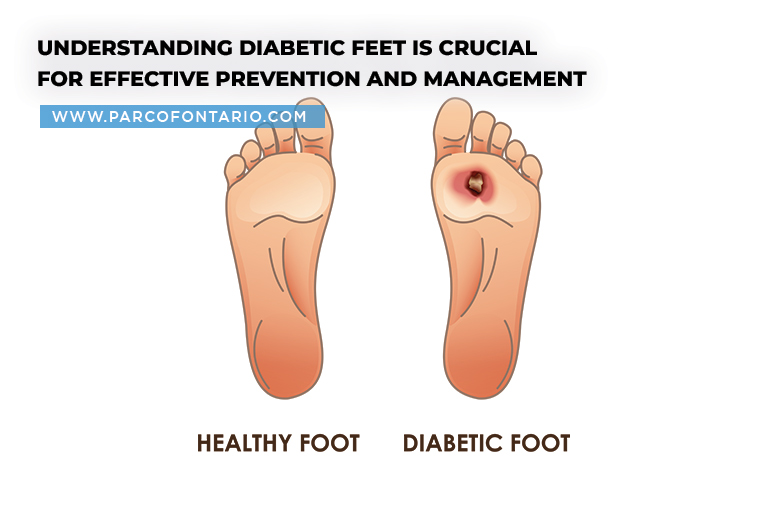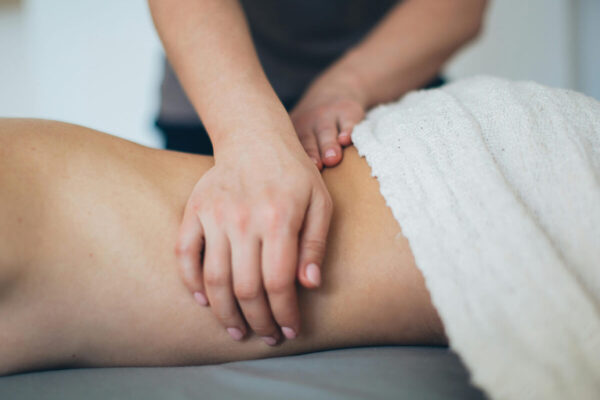How Orthotics in Scarborough Can Improve Diabetic Foot Health
Ensuring healthy feet is paramount in managing diabetes, yet it’s a facet often sidelined until it’s too late. Those with diabetes face heightened risks of foot complications, which can escalate into serious problems if not tended to promptly. Fortunately, in Scarborough, orthotics present a tangible avenue for preemptively addressing these risks and bolstering foot wellness. These specialized devices aren’t just about comfort—they’re integral in safeguarding against diabetic foot ailments and enhancing overall quality of life.
What Are Diabetic Feet?

Diabetic feet refer to the various complications and conditions that arise in the feet due to diabetes. High blood sugar levels can lead to nerve damage and poor blood circulation, significantly affecting foot health. Understanding diabetic feet is essential for effective prevention and management.
Symptoms of Diabetic Feet
The symptoms of diabetic feet serve as crucial indicators of underlying complications that require immediate attention. Understanding and recognizing these symptoms is essential for proactive management and preventing serious complications.
1. Numbness and Tingling
Diabetic neuropathy, or nerve damage, often leads to numbness and tingling sensations in the feet. This occurs due to prolonged high blood sugar levels, which can damage nerves over time. Numbness makes it difficult for individuals to detect injuries or abnormalities in their feet, increasing the risk of complications.
2. Swelling
Poor circulation, a common complication of diabetes, can cause fluid retention and swelling in the feet and ankles. Swelling may be a sign of underlying vascular issues or inflammation and requires prompt attention to prevent further complications.
3. Changes in Skin Color and Temperature
Diabetic foot complications can affect the blood vessels, leading to changes in skin colour and temperature. The skin may appear reddened, bluish, or mottled, indicating poor circulation. The affected areas may also feel unusually warm or cold compared to the surrounding skin.
4. Slow-Healing Sores or Ulcers
Diabetes can impair the body’s ability to heal wounds, resulting in slow-healing sores or ulcers on the feet. These ulcers often develop on pressure points, such as the bottom of the foot or around the toes, and can become infected if not treated promptly. Slow-healing wounds are a significant concern for diabetic patients and require diligent monitoring and care.
5. Pain and Cramping
Diabetic neuropathy can cause chronic pain and cramping in the feet and legs. This pain may be sharp, burning, or tingling in nature and can range from mild discomfort to debilitating agony. Persistent pain and cramping can significantly impact mobility and quality of life for individuals with diabetic foot complications.
Risk Factors for Diabetic Feet
Understanding the risk factors for diabetic feet is paramount in preemptively addressing potential complications associated with diabetes. By recognizing and mitigating these risks, individuals with diabetes can take proactive steps to safeguard their foot health and prevent the development of debilitating complications.
1. High Blood Sugar Levels
Persistent hyperglycemia, or high blood sugar levels, is a primary risk factor for diabetic foot complications. Elevated glucose levels damage blood vessels and nerves over time, impairing foot circulation and sensation. Tight glucose control through medication, diet, and lifestyle modifications is crucial for minimizing the risk of diabetic foot problems.
2. Poor Blood Circulation
Damaged blood vessels from prolonged high blood sugar levels can impair circulation, reducing blood flow to the feet. This diminished circulation hinders the body’s ability to deliver essential nutrients and oxygen to the tissues, increasing the risk of tissue damage and delayed healing.
3. Neuropathy
Diabetic neuropathy refers to nerve damage caused by chronically elevated blood sugar levels. Neuropathy diminishes sensation in the feet, making it difficult for individuals to detect injuries or abnormalities. Without proper sensation, minor injuries can go unnoticed and untreated, escalating into serious complications such as infections or ulcers.
4. Infections
Diabetes weakens the immune system, making individuals more susceptible to infections. Foot infections, such as fungal infections or cellulitis, can occur due to minor injuries or skin breakdown. Without prompt treatment, infections can spread and lead to severe complications, including gangrene and amputation.
5. Foot Deformities
Chronic high blood sugar levels can cause changes in the structure of the feet, leading to deformities such as hammertoes, bunions, or Charcot’s foot. Foot deformities alter weight distribution and increase pressure on certain areas of the foot, raising the risk of ulcers and injuries. Proper foot care and regular monitoring are essential for preventing and managing deformities in diabetic patients.
10 Benefits of Orthotics for Diabetic Feet

Orthotics are specially designed devices worn inside shoes to provide support, improve foot function, and alleviate discomfort. They are often custom-made to fit an individual’s feet’ unique shape and needs. Diabetic foot complications impact over 20% of people with diabetes. Without timely treatment, these complications can develop into diabetic foot ulcers or Charcot arthropathy. To manage diabetic foot, shoe modifications and orthoses effectively alleviate pressure on the affected area and enhance foot stability.
Here are 10 ways orthotics in Scarborough help improve diabetic feet:
1. Enhanced Support
Orthotics in Scarborough provides enhanced support tailored to the specific needs of diabetic feet. This added support helps to alleviate the strain on foot muscles and joints, reducing the risk of injuries. Proper support can also correct abnormal foot mechanics, improving walking patterns. Overall, enhanced support from orthotics contributes to better foot health and comfort.
2. Pressure Distribution
Improper shoes are often identified as a frequent cause of diabetic ulcers. However, orthotics in Scarborough are designed to distribute pressure evenly across the foot, reducing hotspots that can lead to ulcers. By alleviating pressure points, orthotics help prevent skin breakdown and other pressure-related issues. This is particularly beneficial for individuals with neuropathy who may not feel high-pressure areas.
3. Improved Blood Flow
Poor blood circulation is common in diabetic feet, leading to various complications. Orthotics in Scarborough can promote better blood flow by providing proper foot alignment and support. Improved circulation delivers essential nutrients and oxygen to foot tissues, facilitating healing and preventing further complications. Enhanced blood flow also helps reduce swelling and discomfort.
4. Pain Relief
Pain relief is a significant benefit of using orthotics for diabetic feet. Customized orthotics in Scarborough can address specific pain points by providing targeted support and cushioning. This can alleviate pain. Reducing pain enhances mobility and overall quality of life for diabetic patients.
5. Prevention of Ulcers
Foot ulcers are a severe risk for diabetic patients, often leading to infections and, in extreme cases, amputations. Orthotics in Scarborough can prevent ulcers by reducing pressure and friction on vulnerable areas. By providing a custom fit, orthotics help protect the skin from breakdown and promote the healing of existing ulcers. Prevention of ulcers is crucial for maintaining foot health in diabetics.
6. Better Balance and Stability
Diabetic neuropathy can significantly impact balance and stability. Orthotics in Scarborough enhance balance by providing proper foot alignment and support. This helps prevent falls and injuries, which are common in diabetic patients. Better balance and stability also increase confidence and independence in daily activities.
7. Custom Fit for Individual Needs
Every diabetic patient has unique foot care needs. Orthotics in Scarborough offer custom-fitted solutions tailored to individual requirements. A custom fit ensures that orthotics provide optimal support and protection where it is needed most. This personalized approach enhances the effectiveness of orthotics in managing diabetic foot health.
8. Reduction of Friction and Shear
Friction and shear forces can cause significant damage to diabetic feet, leading to blisters and ulcers. Orthotics in Scarborough are designed to minimize these forces by providing a smooth and supportive interface between the foot and the shoe. Reducing friction and shear helps prevent skin injuries and promotes overall foot health. This is particularly important for individuals with reduced sensation due to neuropathy.
9. Protection Against Foot Deformities
Diabetic patients are at risk of developing foot deformities due to prolonged high blood sugar levels and neuropathy. Orthotics in Scarborough can help prevent or correct deformities by providing proper foot support and alignment. This helps maintain the foot’s natural structure and prevents complications, such as bunions and hammertoes. Protecting against deformities is vital for long-term foot health.
10. Enhanced Comfort in Daily Activities
Daily comfort is a significant benefit of using orthotics for diabetic feet. Orthotics in Scarborough enhances comfort by providing cushioning and support tailored to individual needs. This makes walking, standing, and other daily activities more comfortable and less tiring. Improved comfort contributes to a better quality of life and encourages more physical activity, which benefits overall health.
Tips for Choosing the Right Orthotics
Choosing the right orthotics is essential for optimal foot health, especially for individuals with diabetes. With various options available, understanding how to select the most suitable orthotics can make a significant difference in managing foot complications effectively. These tips will help you navigate the process and find orthotics that meet your specific needs and requirements.
1. Consult a Specialist
Schedule an appointment with a podiatrist in Scarborough who can assess your foot health and recommend suitable orthotics. Consulting a specialist ensures that you receive personalized advice based on your specific foot conditions and needs, leading to optimal outcomes.
2. Opt for Custom-Fitted Orthotics
Consider investing in custom-made orthotics tailored to your feet’ exact shape and requirements. These orthotics provide superior support and comfort compared to off-the-shelf options and are designed specifically to address your foot issues.
3. Prioritize Quality Materials
Look for orthotics made from high-quality materials that offer durability and long-lasting support. This ensures that your orthotics withstand daily wear and tear, providing consistent support and protection for your feet over time.
4. Ensure Proper Fit
Choose orthotics that fit snugly inside your shoes without causing discomfort or pressure points. A proper fit is essential for maximizing the benefits of orthotics and preventing further foot problems, such as blisters or calluses.
5. Consider Your Lifestyle
Select orthotics that align with your lifestyle and activity level, whether you need extra cushioning for walking or stability for athletic activities.
Improve Your Foot Health with PARC of Ontario
If you’re a diabetic patient struggling with foot health, consider investing in orthotics from PARC of Ontario. Our experts provide custom-fitted solutions tailored to your unique needs, ensuring maximum support and protection. Don’t wait until complications arise—take proactive steps to improve your foot health today. Contact PARC of Ontario at (647) 352-1100 to schedule a consultation and start your journey towards healthier feet.





